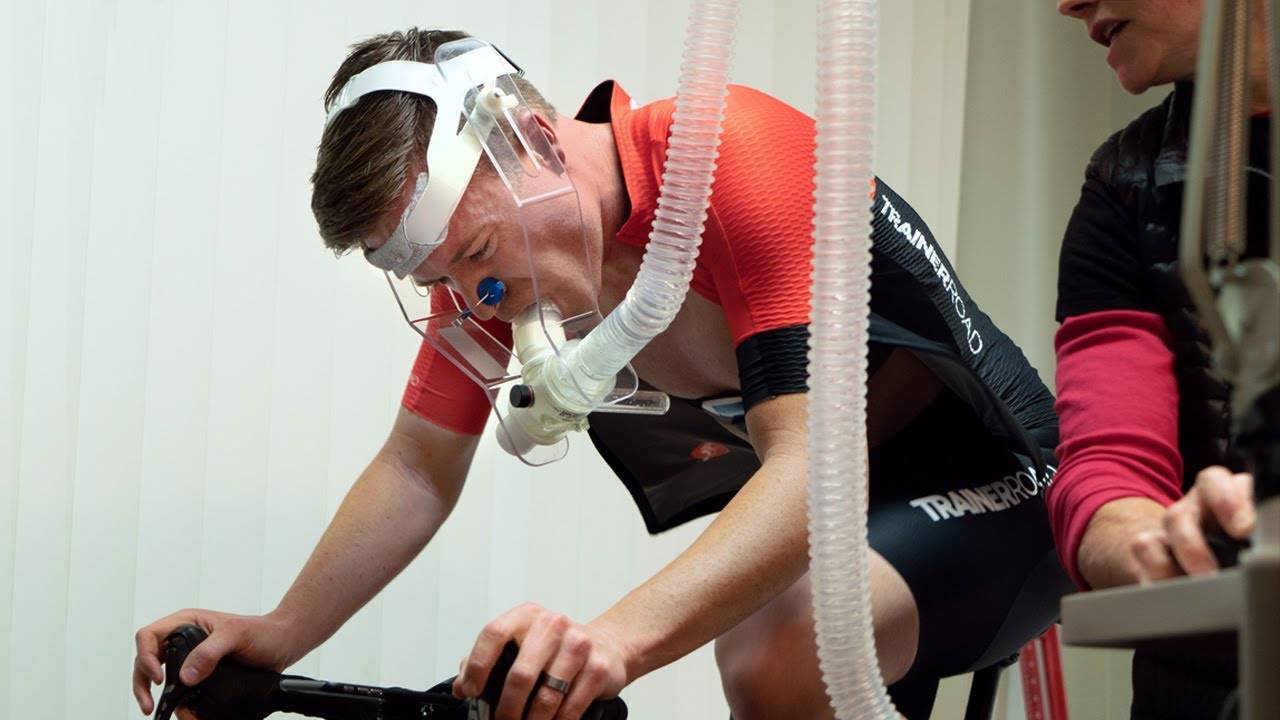Home>Misc>Brands>How Many Calories Should I Be Burning When Doing The 14 Min Interval Training Max Trainer M5


Brands
How Many Calories Should I Be Burning When Doing The 14 Min Interval Training Max Trainer M5
Modified: January 2, 2024
Find out how many calories you should be burning during your 14-minute interval training session with the Max Trainer M5 from top fitness brands.
Introduction
Welcome to the world of the Interval Training Max Trainer M5, a revolutionary fitness equipment designed to maximize your calorie burning potential in just 14 minutes. With its unique combination of cardio and strength training, this innovative machine offers a time-efficient and effective workout solution for individuals with busy schedules.
Whether you’re a fitness enthusiast looking to take your workouts to the next level or someone who wants to kickstart a healthy lifestyle, understanding the science behind the Interval Training Max Trainer M5 is essential. In this article, we will delve into the benefits of interval training, factors that can influence calorie burning, and how to determine the ideal calorie burning goal for your specific needs.
Interval training is a type of exercise that alternates between high-intensity bursts of activity and short recovery periods. The Interval Training Max Trainer M5 is specifically designed to optimize this training method, allowing you to achieve maximum results in a shorter amount of time compared to traditional workouts.
By engaging multiple muscle groups simultaneously, the Interval Training Max Trainer M5 creates a perfect blend of cardiovascular and strength conditioning. This means that not only will you burn calories during your workout, but your metabolism will continue to work efficiently even after you’ve finished exercising.
Additionally, the Interval Training Max Trainer M5 offers a low-impact workout, making it suitable for individuals with joint issues or those recovering from injuries. Its compact design and intuitive features also make it a popular choice for home gyms or small workout spaces.
Now that you have a basic understanding of what the Interval Training Max Trainer M5 is all about, let’s dive deeper into the benefits of interval training and the factors that can influence the number of calories you burn during your workouts.
Understanding the Interval Training Max Trainer M5
The Interval Training Max Trainer M5 is a cutting-edge fitness equipment that combines the benefits of a stepper and an elliptical machine. It utilizes a unique interval training method to maximize calorie burning and overall fitness. Let’s take a closer look at how the Interval Training Max Trainer M5 works.
The machine features a set of handlebars that you can hold onto while performing the exercises. These handlebars are equipped with sensors that track your heart rate and provide real-time feedback on your workout intensity. This allows you to monitor your exertion levels and make adjustments as needed.
The Interval Training Max Trainer M5 operates on the principle of high-intensity interval training (HIIT). During your workout, you’ll alternate between periods of intense exercise and short recovery periods. This type of training has been proven to be highly effective in burning calories, improving cardiovascular health, and boosting overall fitness.
One of the key features of the Interval Training Max Trainer M5 is its ability to engage multiple muscle groups simultaneously. This ensures a full-body workout and maximizes calorie burn. The machine’s resistance levels can be adjusted to suit your fitness level, allowing you to gradually increase the intensity of your workouts over time.
Another unique aspect of the Interval Training Max Trainer M5 is its low-impact design. Unlike high-impact exercises such as running or jumping, the machine’s smooth stepping motion puts minimal stress on your joints. This makes it a great option for individuals with joint issues or those recovering from injuries.
The Interval Training Max Trainer M5 also offers a variety of workout programs to cater to different fitness goals. These programs range from quick 14-minute workouts to longer, more intense sessions. The machine’s console displays important workout metrics such as calories burned, distance covered, and heart rate, allowing you to track your progress and stay motivated.
Overall, the Interval Training Max Trainer M5 is a versatile and efficient fitness equipment that can help you achieve your fitness goals in a short amount of time. Its innovative design, high-intensity interval training method, and low-impact nature make it a popular choice for individuals looking to maximize their calorie burning potential while minimizing joint strain.
Now that you have a better understanding of the Interval Training Max Trainer M5, let’s explore the numerous benefits of interval training.
Benefits of Interval Training
Interval training is a highly effective workout method that offers a plethora of benefits for your overall health and fitness. Let’s dive into some of the key advantages of incorporating interval training into your exercise routine.
- Efficient Calorie Burning: Interval training is known for its ability to help you burn more calories in a shorter amount of time compared to steady-state cardio exercises. The high-intensity bursts followed by shorter recovery periods keep your heart rate elevated, resulting in a greater calorie burn during and after your workout.
- Improved Cardiovascular Fitness: Interval training challenges your cardiovascular system by repeatedly pushing it to its limits and allowing for brief recovery periods. This process helps to strengthen your heart and lungs, improving your overall aerobic capacity and endurance.
- Increased Metabolism: Due to the intense nature of interval training, your body continues to burn calories even after you’ve finished your workout. This is known as the “afterburn effect” or excess post-exercise oxygen consumption (EPOC). The elevated metabolism can last for hours, helping you burn more calories and fat throughout the day.
- Muscle Building and Toning: Interval training engages multiple muscle groups simultaneously, resulting in improved muscle strength and toning. The short bursts of high-intensity exercises promote muscle hypertrophy and increase the production of growth hormones, helping you achieve a lean and sculpted physique.
- Time Efficiency: One of the major benefits of interval training is its time efficiency. With just a few minutes of high-intensity intervals, you can achieve greater results compared to longer, steady-state workouts. This makes it an ideal option for individuals with busy schedules who still want to reap the benefits of a challenging workout.
- Variety and Mental Stimulation: Interval training offers plenty of variety by allowing you to mix up different exercises, intensities, and workout durations. This not only keeps your workouts interesting and exciting but also challenges your mind and prevents boredom, helping you maintain long-term adherence to your fitness routine.
- Adaptable to Different Fitness Levels: Interval training can be adapted to suit various fitness levels. Beginners can start with shorter intervals and lower intensities and gradually progress as their fitness improves. This versatility makes it accessible to individuals of all fitness backgrounds.
By incorporating interval training into your exercise routine, you can enjoy these numerous benefits and make significant strides towards your fitness goals. Now, let’s explore the factors that can affect the number of calories you burn during interval training sessions.
Factors Affecting Calorie Burning
While interval training is a highly effective method for calorie burning, it’s important to understand that several factors can influence the number of calories you burn during your workouts. Let’s explore some of these key factors.
- Intensity of Exercise: The intensity of your workout has a direct impact on the number of calories you burn. Higher intensity exercises, such as sprinting or jumping jacks, require more energy and result in a greater calorie burn compared to lower intensity exercises.
- Duration of Intervals: The length of your high-intensity intervals can also affect calorie burning. Longer intervals generally allow for a greater calorie burn compared to shorter intervals. However, shorter intervals (e.g., 30 seconds) can be more intense, leading to a higher metabolic demand and calorie burn.
- Recovery Period Length: The length of your recovery periods also plays a role in calorie burning. Shorter recovery periods, where you complete less active rest, can maintain a higher heart rate and keep your body working hard, resulting in greater calorie burn throughout the workout.
- Individual Fitness Level: Your current fitness level can impact the number of calories you burn during interval training. As you become more fit, your body becomes more efficient at performing exercises, potentially resulting in a reduction in calorie burn. However, higher fitness levels generally allow for greater intensity, leading to increased calorie burn.
- Gender and Body Composition: Biological factors, such as gender and body composition, can influence calorie burning. Males typically have a higher muscle mass and lower body fat percentage, which can result in a higher calorie burn compared to females during the same workout. Additionally, individuals with more muscle mass tend to burn more calories at rest.
- Overall Body Weight: Your body weight plays a role in calorie burn during interval training. In general, individuals with higher body weights tend to burn more calories due to the increased energy required to move and support their body during exercise.
- Environmental Factors: Environmental conditions, such as temperature and humidity, can affect the rate at which you burn calories. Exercising in hotter temperatures or at higher altitudes can increase your metabolic rate, resulting in additional calorie burn.
It’s important to note that these factors can vary from person to person, so it’s essential to listen to your body and adjust your workouts accordingly. Now that we understand the factors that can influence calorie burning, let’s move on to determining your calorie burning goal during your 14-minute interval training sessions.
Determining Your Calorie Burning Goal
Setting a calorie burning goal for your 14-minute interval training sessions can help you stay focused and motivated during your workouts. However, determining your specific goal depends on various factors, including your fitness level, weight loss goals, and overall health. Let’s explore how to determine your calorie burning goal.
1. Calculate Basal Metabolic Rate (BMR): Your BMR is the number of calories your body needs to perform basic functions at rest. Use an online BMR calculator to estimate your daily calorie needs based on your age, gender, weight, and height. This will give you a starting point for determining your calorie burning goal.
2. Consider Your Weight Loss Goals: If weight loss is your primary goal, you need to create a calorie deficit by burning more calories than you consume. Aim for a reasonable and sustainable calorie deficit of around 500-1000 calories per day, which can lead to a healthy weight loss of 1-2 pounds per week.
3. Determine Caloric Expenditure During Exercise: Use a fitness tracker or heart rate monitor to estimate the number of calories you burn during your 14-minute interval training sessions. These devices provide a more accurate estimation, taking into account your heart rate, duration of exercise, and intensity level.
4. Set Specific and Realistic Goals: Based on your BMR and caloric expenditure during exercise, set a specific and realistic calorie burning goal for each training session. Gradually increase the intensity and duration of your workouts to challenge your body and continue seeing progress over time.
5. Listen to Your Body: It’s essential to listen to your body’s cues during your workouts. If you feel fatigued or your heart rate is excessively high, it’s okay to adjust the intensity or take longer recovery periods to ensure you’re working within a safe and comfortable range.
6. Seek Professional Guidance: If you’re unsure about determining your calorie burning goal or need assistance with setting realistic goals, consider consulting with a certified fitness professional or a registered dietitian. They can provide personalized guidance based on your individual needs and help you formulate an effective plan.
Remember, everyone’s calorie burning goals will differ based on individual factors and objectives. It’s essential to focus on progress rather than comparing yourself to others. Celebrate each milestone and make adjustments to your goals as needed. Now that you have a target in mind, let’s explore the target heart rate for maximum calorie burn during your interval training sessions.
Target Heart Rate for Maximum Calorie Burn
Understanding your target heart rate during interval training is crucial for optimizing calorie burn and maximizing the effectiveness of your workouts. Your target heart rate zone will vary based on factors such as age, fitness level, and overall health. Let’s explore how to determine your target heart rate for maximum calorie burn.
1. Calculate Your Maximum Heart Rate (MHR): Subtract your age from 220 to find your estimated MHR. This simple calculation provides a general guideline for determining your target heart rate zone.
2. Determine Your Target Heart Rate Zone: The American Heart Association recommends aiming for a target heart rate zone of 50-85% of your maximum heart rate during moderate to vigorous exercise. This range ensures you’re working within a safe and effective intensity level.
3. Use a Heart Rate Monitor: Invest in a heart rate monitor or utilize the built-in heart rate tracking feature on your fitness tracker or smartwatch. These devices provide real-time feedback on your heart rate, helping you stay within your target heart rate zone during your interval training sessions.
4. Gradually Increase Intensity: During your workouts, gradually increase the intensity until you reach your target heart rate zone. This can be achieved by increasing the resistance or speed of the exercises or by adding additional repetitions or sets.
5. Listen to Your Body: While it’s important to strive for your target heart rate, it’s equally crucial to listen to your body’s signals. If you experience chest pain, dizziness, or extreme fatigue, slow down or take a break to ensure your safety and well-being.
6. Vary Intensity Levels: To challenge your cardiovascular system and promote continuous improvement, consider incorporating intervals of higher intensity within your target heart rate zone. This can involve increasing the resistance or speed for short bursts of time during your workout.
7. Consult a Healthcare Professional: If you have any underlying health conditions or concerns about exercising within your target heart rate zone, consult with a healthcare professional or a certified fitness trainer. They can provide personalized guidance and help you establish appropriate heart rate goals.
By understanding and monitoring your target heart rate, you can ensure you’re working at an optimal intensity level to maximize calorie burn during your interval training sessions. Now that you have an idea of the target heart rate, let’s discuss how many calories you should aim to burn in your 14-minute interval training sessions.
How Many Calories Should You Be Burning in 14 Minutes?
The number of calories you should aim to burn during your 14-minute interval training sessions depends on various factors, including your weight, fitness level, and goals. While the exact calorie burn will vary from person to person, there are general guidelines that can help you determine a reasonable target. Let’s explore how to estimate the number of calories you should be burning in 14 minutes of interval training.
1. Calculate Caloric Expenditure: Use a calorie calculator or fitness tracker to estimate the number of calories you burn per minute during your interval training sessions. This estimation takes into account factors such as your weight, heart rate, and workout intensity.
2. Multiply by 14: Once you have the estimated calorie burn per minute, multiply it by 14 to determine the total number of calories you should aim to burn during your 14-minute workout. This will give you a rough idea of your calorie burning goal for the session.
3. Adjust for Intensity: If you want to increase the intensity of your workout, you can aim to burn more calories within the 14 minutes. This can be achieved by choosing higher intensity exercises, increasing resistance or speed, or reducing rest time between intervals.
4. Consider Weight Loss Goals: If your primary goal is weight loss, you might want to create a calorie deficit by burning more calories than you consume. Consider consulting with a registered dietitian or healthcare professional to determine the appropriate calorie deficit for your specific goals.
5. Monitor and Adjust: During your workouts, use a heart rate monitor or fitness tracker to track your calorie burn in real-time. This will allow you to monitor your progress and make adjustments as needed to meet your calorie burning goal.
It’s important to remember that these are just estimates, and the actual calorie burn can vary based on individual factors and the intensity of your workout. Additionally, keep in mind that achieving your desired calorie burn in 14 minutes may require a higher intensity level compared to longer workouts.
Ultimately, the most important aspect is to focus on consistent effort and continuous improvement over time. As you become fitter and stronger, you can gradually increase your calorie burning goal and challenge yourself to push harder during your interval training sessions.
Now that you have an idea of how many calories you should aim to burn, let’s explore some tips to maximize calorie burning efficiency during your interval training workouts.
Tips to Maximize Calorie Burning Efficiency
When it comes to interval training, there are several strategies you can implement to maximize your calorie burning efficiency and get the most out of your workouts. Let’s explore some tips to help you achieve optimal results during your interval training sessions.
- Incorporate High-Intensity Exercises: Include exercises that require a high level of exertion, such as sprints, burpees, or kettlebell swings. These movements engage multiple muscle groups and elevate your heart rate, resulting in more calories burned.
- Progressively Increase Intensity: Gradually increase the intensity of your intervals over time. This can involve adding more resistance, increasing speed or duration, or incorporating advanced variations of exercises. Continuously challenging yourself ensures that your body keeps adapting and burning more calories.
- Engage in Strength Training: Integrate strength training exercises into your interval training routine. Building lean muscle mass increases your metabolism, allowing you to burn more calories even at rest. Incorporate moves like push-ups, lunges, or dumbbell exercises during your workout sessions.
- Utilize Full-Body Movements: Opt for exercises that engage multiple muscle groups simultaneously. Squats, mountain climbers, or jumping jacks are examples of movements that work your lower body, upper body, and core muscles simultaneously, resulting in a higher calorie burn.
- Minimize Rest Time: Keep your rest periods short between intervals to maintain an elevated heart rate and keep your body working. However, ensure that you allow for enough recovery to perform the exercises safely and maintain proper form.
- Add Resistance or Weight: Incorporating resistance bands, weights, or bodyweight vests can increase the overall intensity of your interval training. The added resistance challenges your muscles and boosts calorie burn, leading to greater fitness gains.
- Stay Hydrated: Proper hydration is essential for optimizing performance and calorie burn. Drink water before, during, and after your workouts to replenish fluids and help maintain energy levels throughout your interval training sessions.
- Vary Your Workouts: Keep your workouts fresh and prevent plateauing by introducing new exercises and varying your routines. This not only helps to avoid boredom but also challenges your body in different ways, leading to increased calorie burn.
- Focus on Technique: Ensure you are performing each exercise with proper form and technique. This not only maximizes calorie burn but also reduces the risk of injury. Consider working with a certified fitness trainer to learn correct exercise form.
- Push Beyond Your Comfort Zone: Embrace the discomfort and push yourself beyond your comfort zone during your interval training sessions. The more you challenge yourself, the greater the calorie burn and fitness improvements.
Remember, when it comes to interval training, consistency is key. Aim for regular workouts, gradually increasing intensity, and adjusting your routines to prevent stagnation. By implementing these tips, you can enhance the calorie burning efficiency of your interval training and achieve your fitness goals more effectively.
Now that you have a clearer understanding of maximizing calorie burning during interval training, let’s discuss how you can monitor your calorie burn and track your progress.
Monitoring Calorie Burn during Interval Training
Monitoring your calorie burn during interval training is a valuable tool to track your progress, stay motivated, and optimize your workouts. While there are various methods available to monitor calorie burn, it’s important to choose the one that suits your needs and preferences. Let’s explore some options for tracking and monitoring your calorie burn during interval training.
Fitness Trackers: Utilize a fitness tracker or smartwatch with built-in heart rate monitoring capabilities. These devices use sensors to track your heart rate and estimate your calorie burn based on factors like age, weight, and exercise intensity. Some models also provide additional metrics like distance covered and steps taken.
Heart Rate Monitors: Dedicated heart rate monitors provide more accurate readings of your heart rate during exercise. These devices often come in the form of chest straps or wristbands and transmit data wirelessly to compatible devices, such as smartphones or smartwatches. The recorded heart rate data can then be used to estimate calorie burn.
Calorie Calculators: Online calorie calculators can provide a general estimation of calorie burn based on factors like exercise type, duration, and intensity. While these calculators may not be as accurate as heart rate monitoring devices, they can still give you a rough idea of your calorie burn during interval training.
Workout Apps: Many fitness apps and platforms offer interval training programs that track and display your calorie burn. These apps often integrate with fitness trackers or allow manual input of exercise details to calculate calorie expenditure accurately.
Heart Rate Zones: Understand your target heart rate zone for calorie burning efficiency. By staying within the recommended heart rate range during interval training, you can ensure that you’re working at the desired intensity level and maximizing your calorie burn.
Self-Perception of Effort: Listen to your body and pay attention to the perceived effort during your interval training sessions. Rate your effort on a scale from 1 to 10, with 10 being the highest. Over time, you’ll develop a sense of your exertion level and be able to gauge the intensity of your workouts.
Remember that monitoring devices and calculators provide estimations and may not be 100% accurate. Factors such as individual metabolism, body composition, and external conditions can affect calorie burn. Therefore, it’s essential to use these tools as a guide and adjust based on personal feedback and progress.
By monitoring your calorie burn during interval training, you can track your progress, make necessary adjustments to your workouts, and stay motivated on your fitness journey. Now that you have a better understanding of how to monitor your calorie burn, take this knowledge and apply it to your interval training sessions for optimal results.
Conclusion
Interval training on the Interval Training Max Trainer M5 is an efficient and effective way to maximize calorie burning and achieve your fitness goals. By understanding the mechanics of the machine, the benefits of interval training, and the factors that influence calorie burn, you can design a workout routine that suits your needs and brings you closer to your desired outcomes.
Interval training offers numerous benefits, including efficient calorie burning, improved cardiovascular fitness, increased metabolism, and muscle building and toning. It is a versatile and adaptable workout method that can be modified to suit different fitness levels and goals.
When determining your calorie burning goal, consider factors such as your basal metabolic rate, weight loss objectives, and overall health. By setting specific and realistic goals, monitoring your progress, and gradually increasing the intensity of your workouts, you can optimize your calorie burn during the 14 minutes of interval training on the Max Trainer M5.
To maximize calorie burning efficiency, incorporate high-intensity exercises, progressively increase intensity, engage in strength training, and minimize rest time. Varying your workouts, focusing on proper technique, and pushing beyond your comfort zone are additional strategies to enhance calorie burn.
Monitoring your calorie burn during interval training can be done through fitness trackers, heart rate monitors, calorie calculators, or self-perception of effort. While these tools offer estimates, it’s important to listen to your body and adjust based on personal feedback.
Remember that consistency, dedication, and a well-rounded approach to health and fitness are key to achieving your goals. Interval training on the Interval Training Max Trainer M5 provides a time-efficient solution for burning calories, improving cardiovascular health, and building strength.
So, lace up your sneakers, set your goals, and embark on your interval training journey with the Interval Training Max Trainer M5. With dedication and determination, you can transform your body, enhance your fitness, and enjoy a healthier, more energetic lifestyle.








